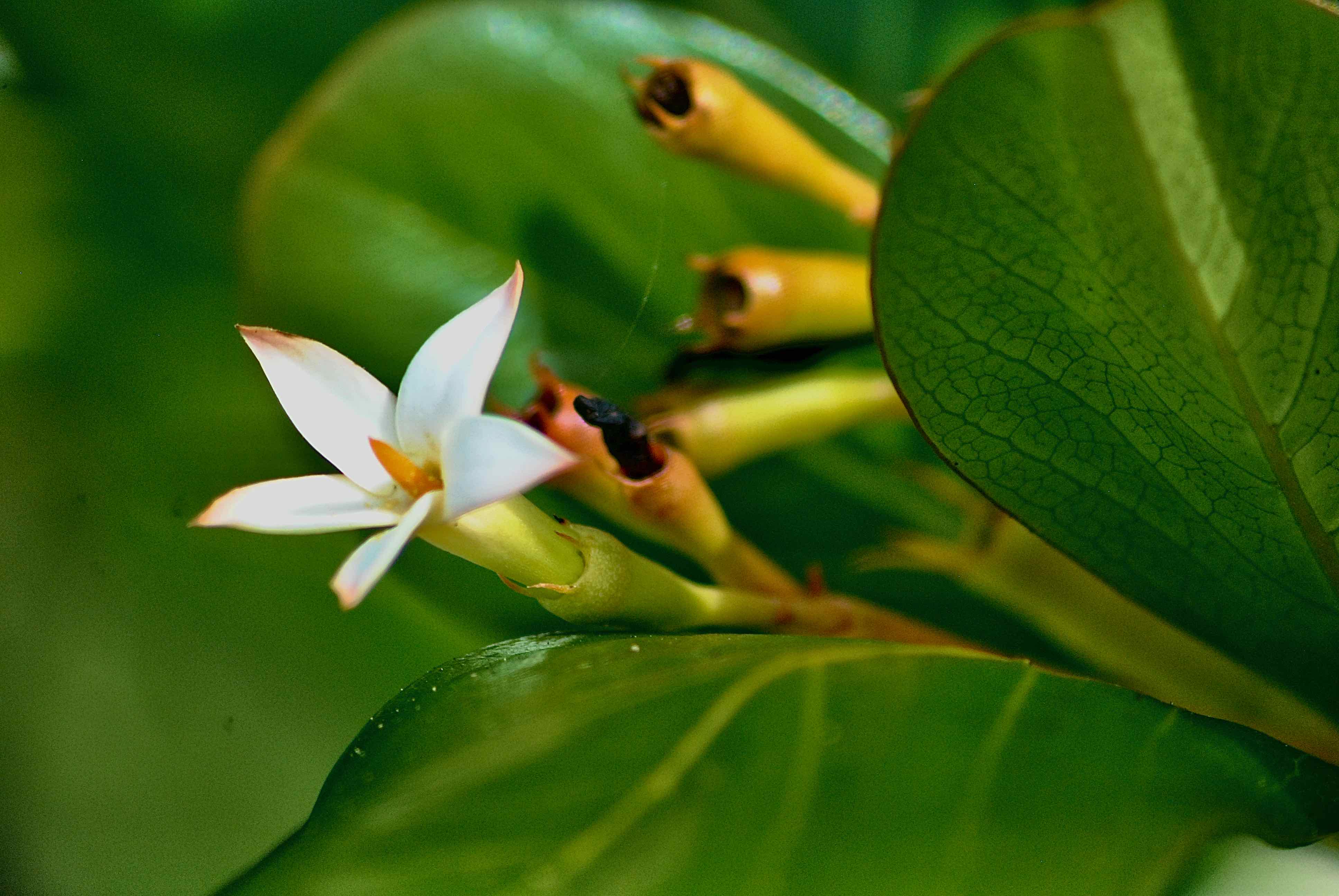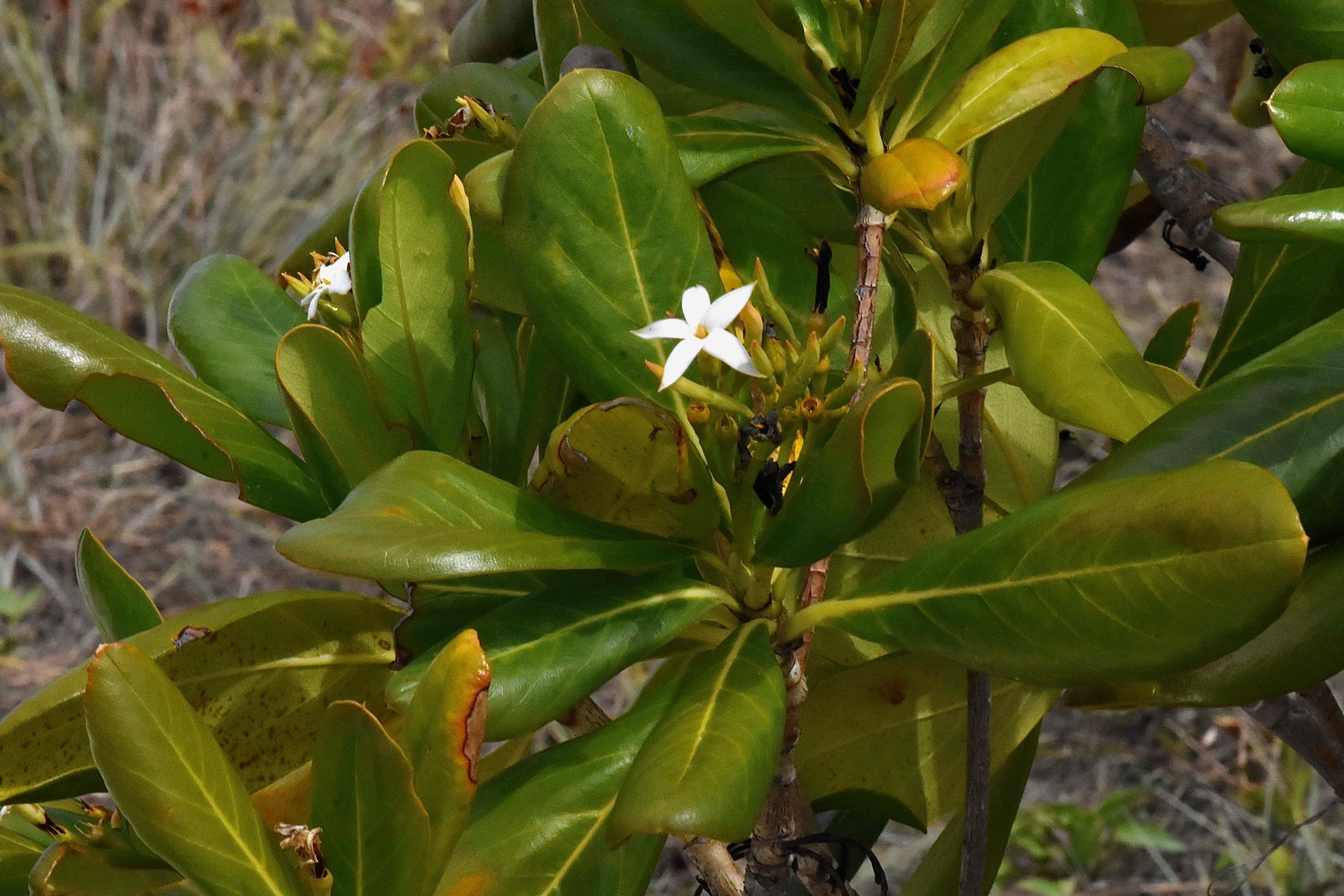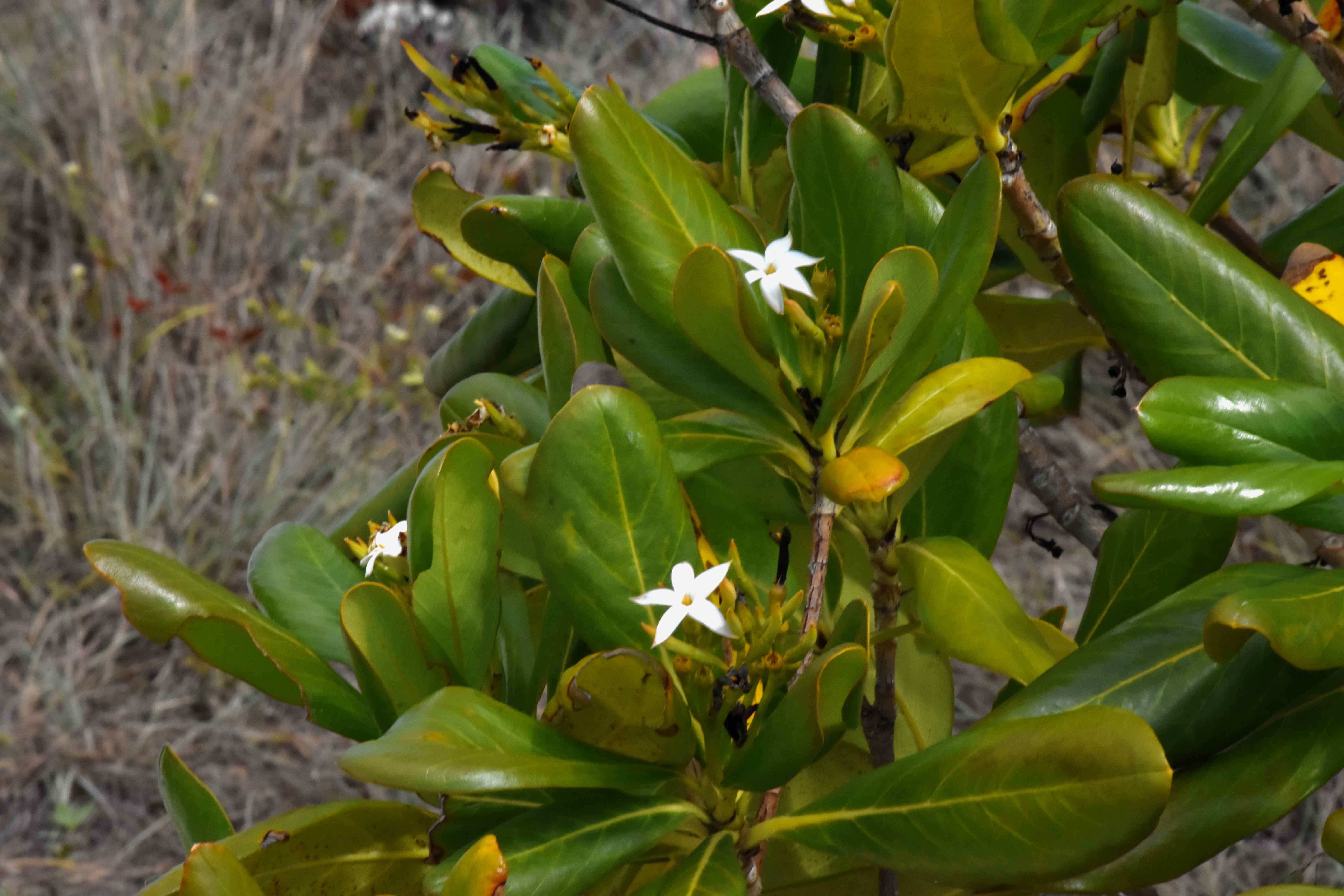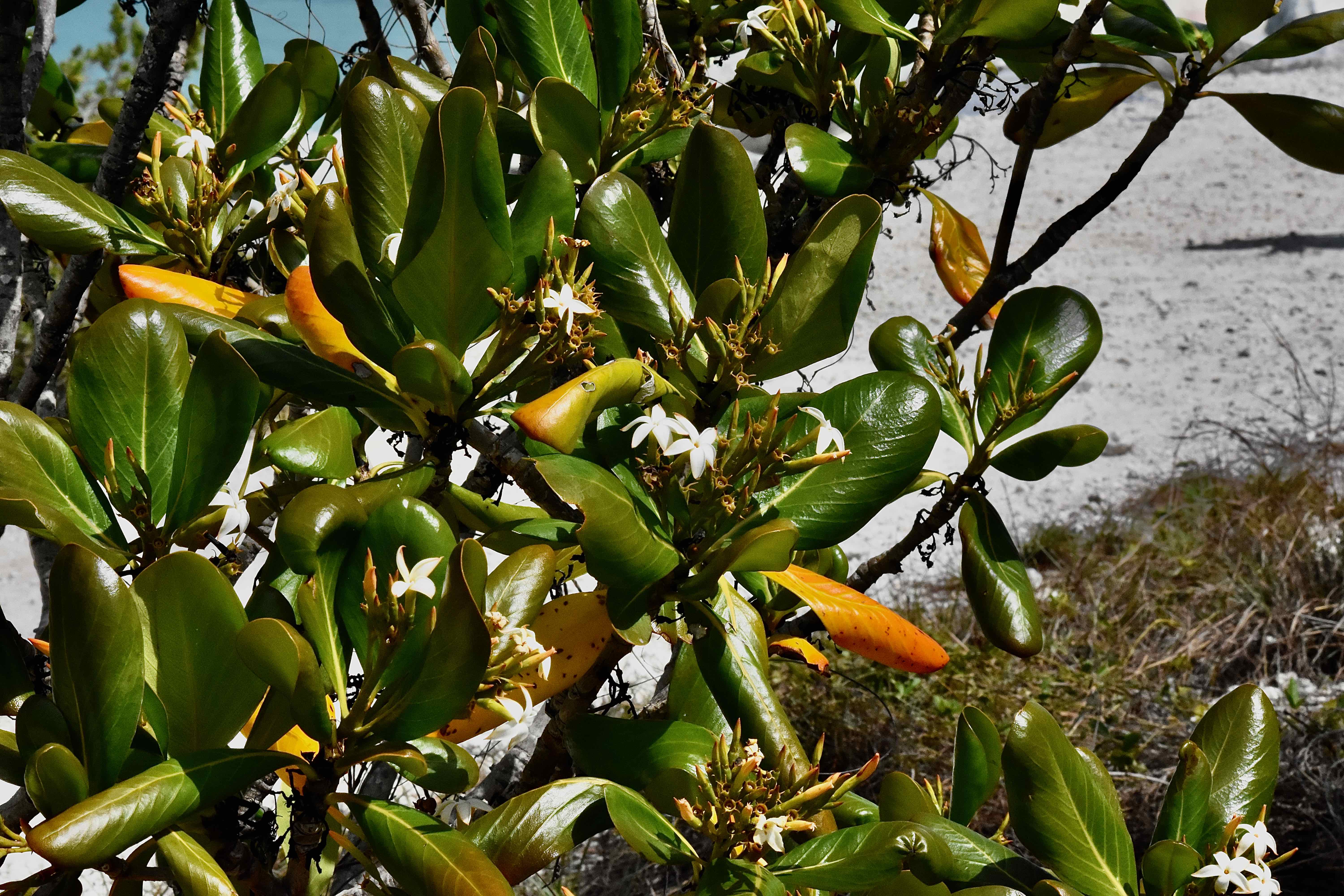
Seven year apple, photographed at Bahia Honda State Park, Bahia Honda Key, Monroe County, in December 2013.
It really doesn’t take seven years for the seven year apple to ripen, but if you didn’t know better, you’d swear the ripe fruit had been hanging there for seven years. As in seven years past ripe.
Over about 10 months, the fruit, which is about the size and shape of a lemon, goes from green to yellow to orange to, finally, black and wrinkly when ripe, appearing more rotten than ripe to an unaware eye.
Scientifically known as Casasia clusiifolia, seven year apple is a Florida native found in coastal hammocks and thickets. Its range extends from Broward County on the Atlantic coast south into the Keys and from Lee County southward along the Gulf. It’s also native to Bermuda, the Bahamas and Cuba.
It usually grows in the form of a shrub, but it can reach tree dimensions. The champion seven year apple, as proclaimed a few years ago by the conservation group, American Forests, was 25 feet tall, with a trunk circumference of 13 inches and a crown spread of 12 feet, growing in Biscayne National Park in Miami-Dade County. Usually it tops out at 10 to 15 feet tall and has a dense, rounded crown.
The leaves are somewhat oval-shaped, about four to eight inches long, glossy green, leathery to the touch, simple, alternately arranged and clustered toward the tips of branches. The flowers are star-shaped, white, with a hint of a dull orange or pink, maybe, along the outer edges of the petals. The fruit, as noted above, is a large berry about the size and shape of a lemon. Both the flowers and fruit appear year-round. The overall effect is an attractive-looking plant.
The taste of seven year apple is debatable, according to Green Dean, our favorite Florida forager. The flavor is similar to liquorice but there’s a sharp divide as to its quality; you either like it or hate it, little in between.
Again, as noted earlier, the fruit when ripe is black and wrinkly. To “eat” it, the rind is punctured and the jelly-like pulp is sucked out, carefully avoiding the seeds, which, if swallowed, can make you toss your cookies, so to speak.
According to Green Dean, seven year apple is used in parts of the Caribbean to make a drink, and in the Philippines to make ice cream and sorbet. (We’re guessing the Spanish brought the seven year apple to the Philippines during the time they ruled both Cuba and the Southeast Asian country.)
A variety of birds and mammals will eat the fruit, but northern mockingbirds have a special affinity for it; unlike us humans, they’re after the seeds rather than the pulp and will leave the fruit hanging on the tree like empty sacks when done.
Seven year apple also has been used as a dye. Again according to Green Dean, it turns black on contact with human skin, blue or purple on other things, such as cloth.
It’s a host plant for the tantalus sphinx moth, a nectar source for the mangrove skipper and other butterflies.
Seven year apple is a fairly tough plant, which is not surprising since it grows in coastal areas, where conditions can be tough. It takes to full sun, tolerates some drought, some salt breeze and some salt in the soil. It does not tolerate inundation by salt or briny water, however.
It can be used in both residential and commercial landscapes as a specimen or accent planting, as a hedge, buffer or screen, in parking lot islands or highway medians.
A quick taxonomic note: you will see references that use Genipa or Randia as the genus for seven year apple, but the Integrated Taxonomic Information System, our arbitor of such things, uses Casasia as the accepted genus and classifies the other two as synonyms.
Seven year apple is also spelled sevenyear apple and seven-year apple. It is a member of Rubiaceae, the coffee family.
Bahia Honda State Park



